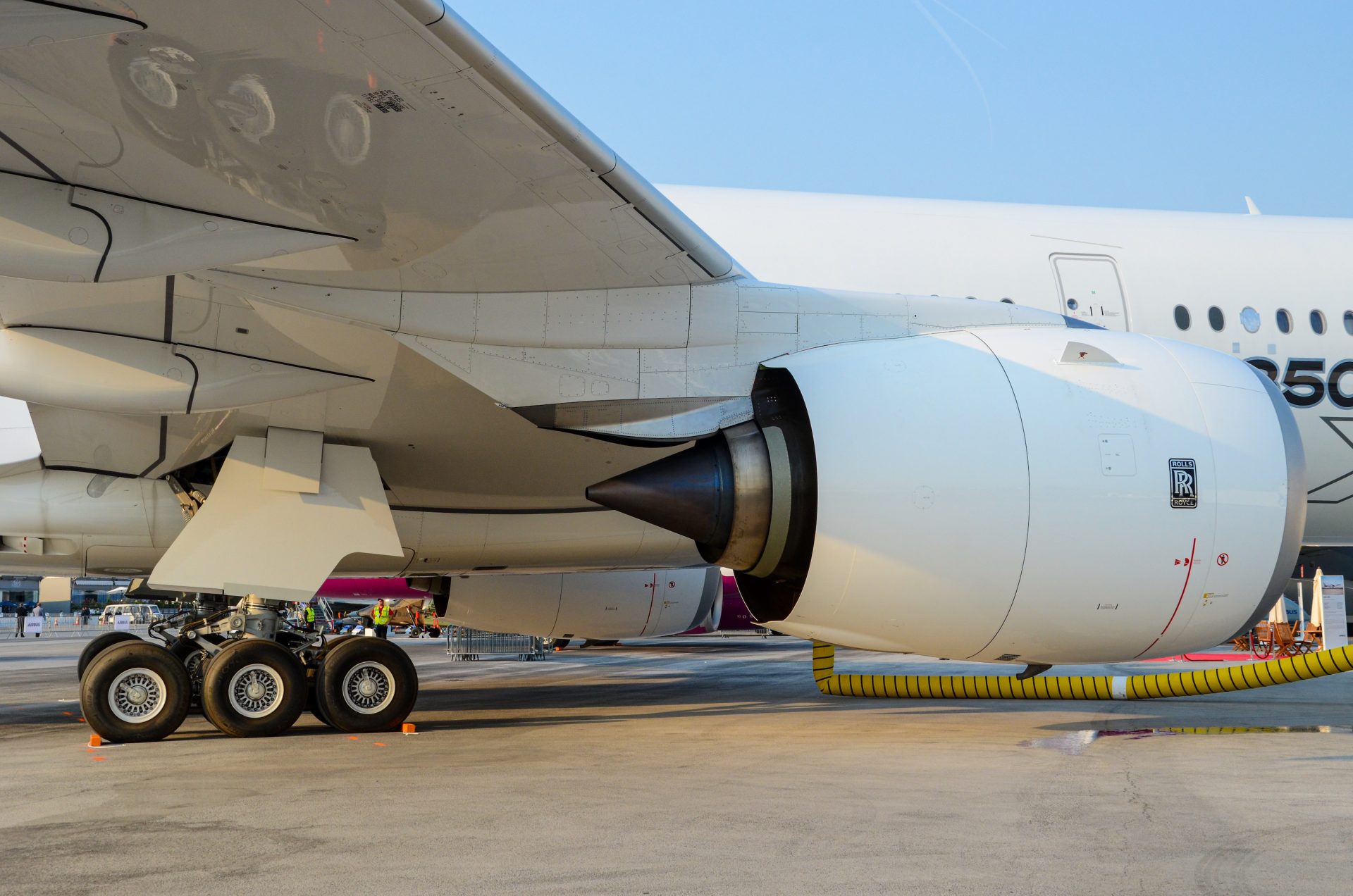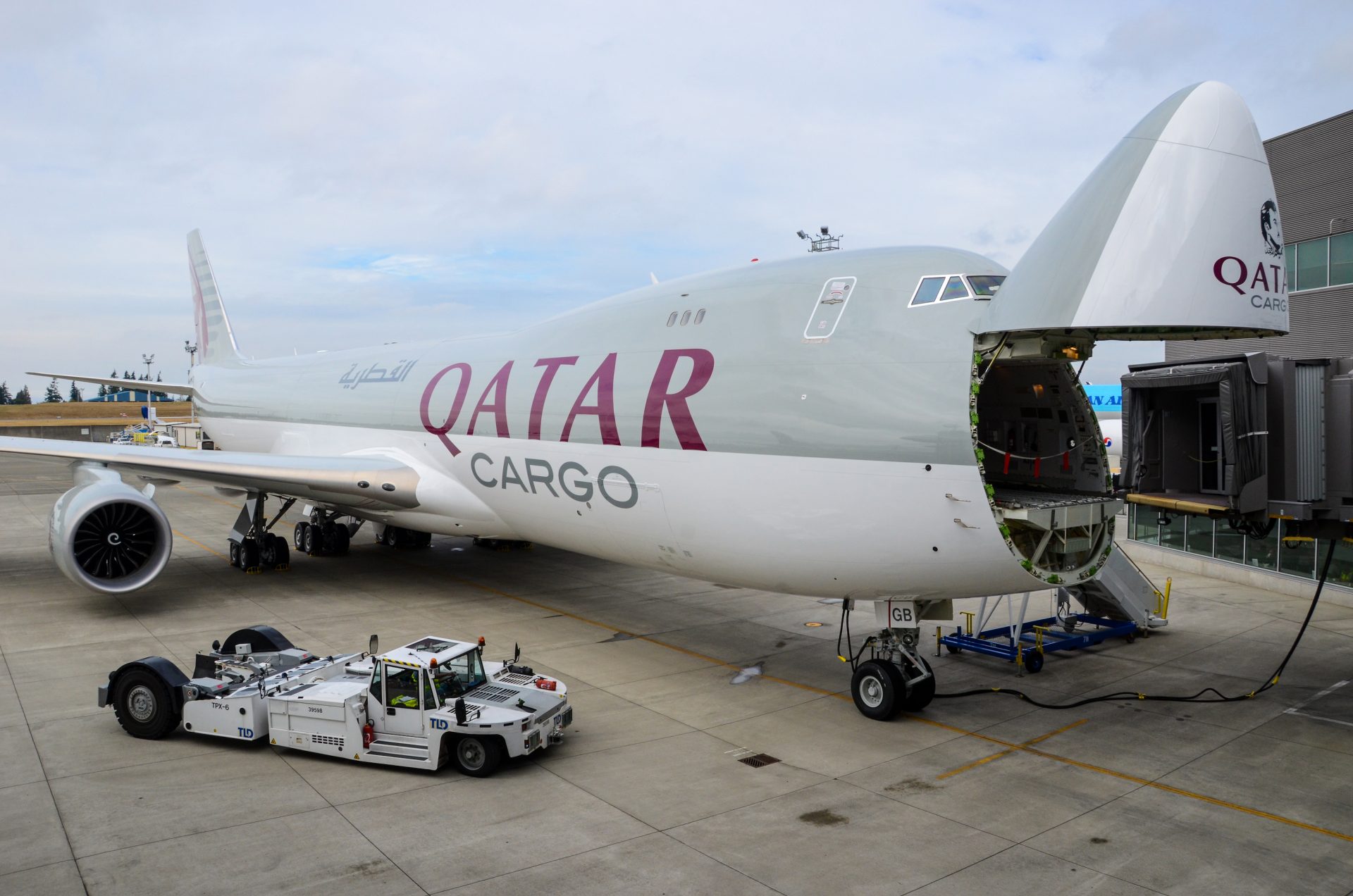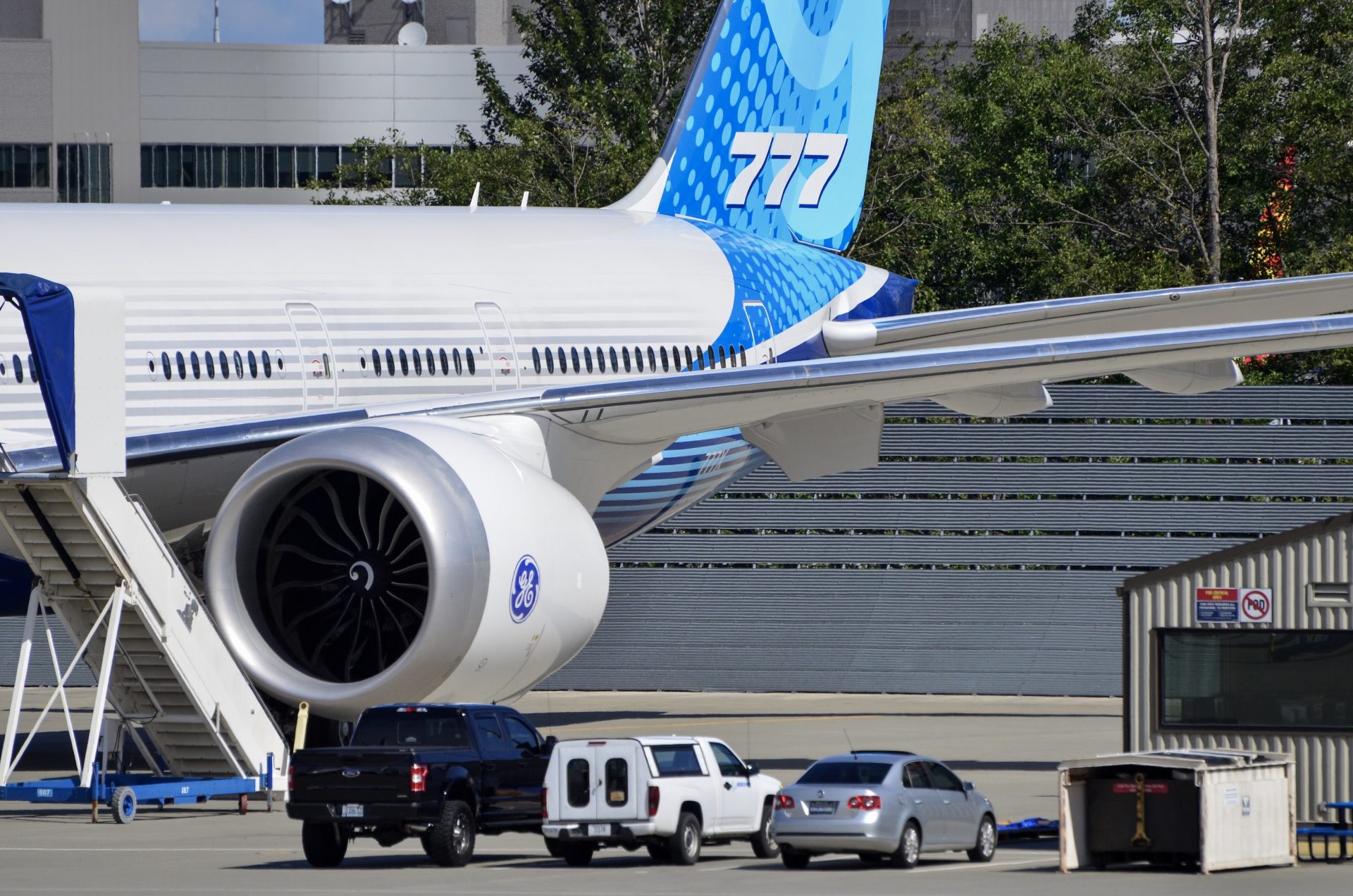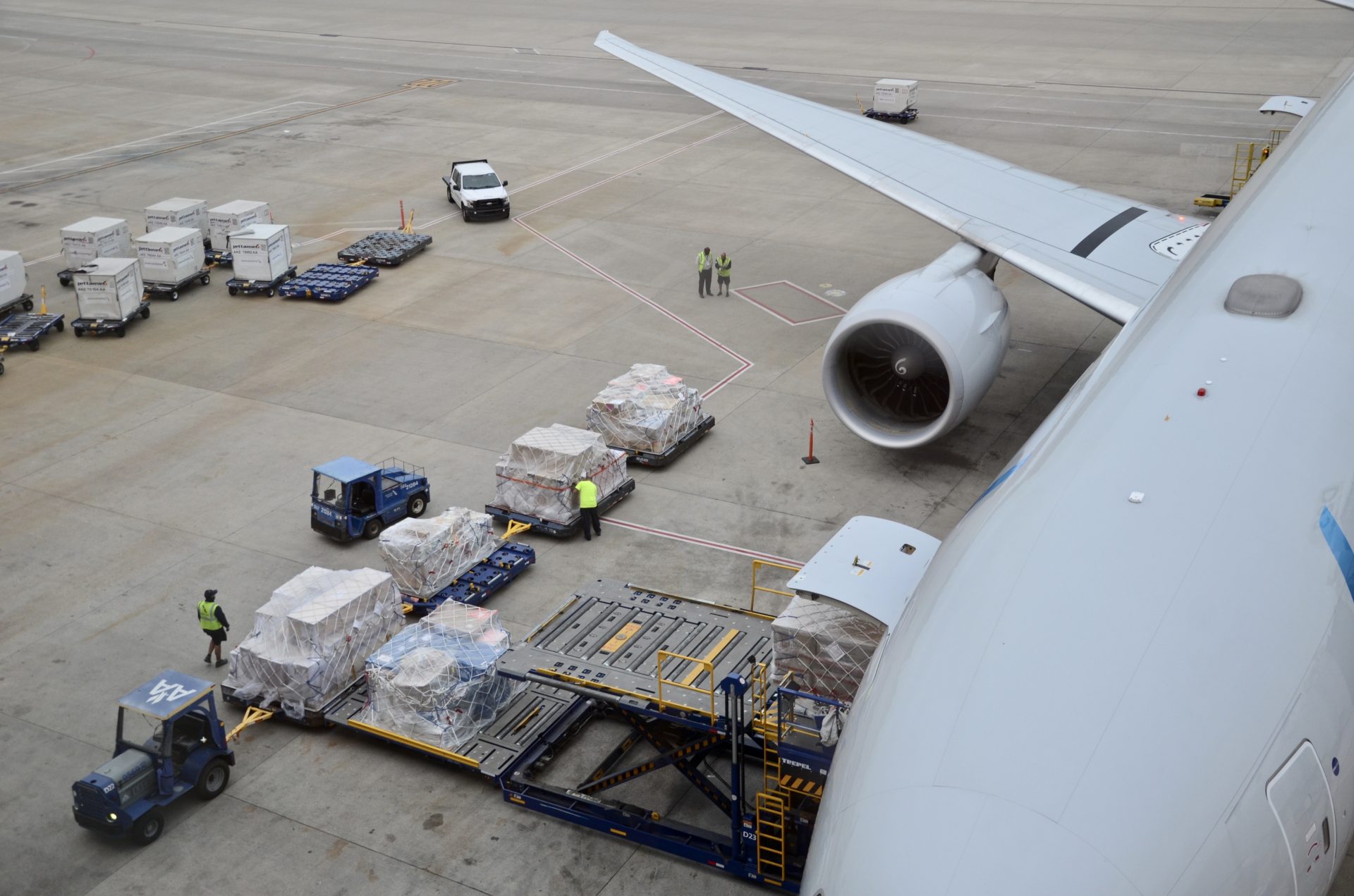Airbus launches A350 cargo to fix its freighter fortunes

Seeing an opening with uncertain Boeing product strategy, Airbus advances toward an A350 freighter. Possible buyers urge consideration of an engine from GE.
“Airbus is not known for producing freighters,” said John Plueger, Chief Executive of Air Lease Corporation. While its best-selling factory freighter, the A300, went out of productionin 2007, its A380 never got off the drawing board and the A330-200 quickly flamed out.
Now, as airlines face a glut of wide body passenger aircraft of all shapes and sizes and a global economy reliant on air freight, the company is looking to an A350 freighter for its next airplane development and making a run at Boeing’s longstanding freighter supremacy.
“If you have a production line that’s not selling on the passenger side, why not do a freighter?” said Plueger of the A350 in a recent interview with The Air Current. ”It’s a logical thing…if you think you’ve got a reasonable freighter that you can make out of it for not too much more money, it’s a reasonable thing to do.”
An A350 freighter is a natural segue for Airbus’s engineering teams, which are nearing the start of assembly of its first A321XLR test aircraft later this year before flying in 2022. A350 production rates are roughly half of what they were at the start of 2020 and work is already well underway for a sizable performance improvement package for its passenger models. An A350 freighter could be ready as soon as the second half of 2025, according to two people familiar with the company’s thinking.
“The freighter market is underserved by Airbus today,” said the company’s chief commercial officer Christian Scherer last week, a nod to the struggles of its factory-built A330 freighter. “We have some wind in our sails toward seeing the emergence of an A350 freighter, as we consolidate our studies and our business case.” Scherer’s boss, Airbus chief executive Guillaume Faury, said Monday that the case for launching the freighter wasn’t ready. “We aren’t there yet,” he said according to Bloomberg News.
Configuring an A350 Freighter
Airbus’s deliberations on the freighter come against the backdrop of already active engineering efforts to continue to evolve both the A350 and 787, both in the works before the pandemic hit. “If you have a tough wide body market, which we do today, you’re going to want to do all you can to try and reverse that,” said Pleuger. “These are modest, incremental, normal product life enhancements…It’s not going to drive the bus, it’s going to make it a better bus to be on.”
Yet, as it plots a configuration for the A350 freighter, Airbus is planning a 624,000-lb (283 metric ton) variant of the A350-900 (up from 280t), in the works for around 2024 that also includes a 2% improvement in fuel burn on Rolls-Royce’s Trent XWB engine. A takeoff weight bump is also expected on the A350-1000.
The Air Current reported in May 2019 about a series of payload and range improvements for the 787-9 and -10, upping the jet’s maximum takeoff weightto 572,000 lbs. (260 metric tons). Prior to the pandemic, Boeing planned to introduce the improved 787 — the 787IGW (increased gross weight) as it is known internally to Boeing — with Air New Zealand in late 2022. The IGW is understood to be a structural stepping stone for an eventual re-engined 787, should it come to pass. Given changes in production rates and customer deferrals the timing of the IGW is no longer clear.
The Air Current understands that the Airbus freighter design is neither the length of an A350-900 nor -1000. An A350 freighter’s fuselage slots in between both variants, with an eye toward likely enabling the main deck to fit 31 96-by-125-inch pallets —loadable through a cargo door on the forward fuselage. Aviation Week reported in April that the aircraft would have the A350-1000’s Trent XWB-97 engine and six-wheeled main landing gear.
The specifications of the A350 freighter reflect an industry view that Boeing’s most recent public specifications for the dormant 777-8, on which its 777X freighter was once based, is seen as slightly too short. Its overall length leaves 10 feet of dead space where two more pallets could otherwise fit, say industry observers. The existing A350-900, some 9-feet 11-inches longer than Boeing’s 777F, has the same issue.
The growth of global e-commerce is central to Airbus’s thinking, said Plueger. While the final design isn’t yet clear, opting to stretch the A350-900 to roughly 230-feet with its coming payload increase prioritizes volume over the A350-1000’s greater overall structural payload capacity.
“Certainly e-commerce has caused an explosion in the freight business. That business, by the way, requires bulk volume, as opposed to structural capacity,” said Plueger. Cardboard boxes from Amazon, for example, will fill up a hold first, well before the aircraft’s payload capability is reached. That may only hold true in one direction, however, with tightly packed incoming inventory flying from Asia.
There remains a debate about which direction air freight inherently heads. “The vast majority of airfreight is and will remain supply chain cargo, perishables and other ugly stuff. Not e-commerce,” said Frederic Horst, managing director at Cargo Facts Consulting. Airbus could also preserve both the volume and payload by shrinking the -1000’s fuselage, in the same way Boeing shortened the 777-300ER as the foundation for the passenger -200LR and freighter.

With the 2022 sunset of the 747-8F, an A350 freighter would become the largest factory built freighter if it enters service in the middle of the decade. “If all of this would actually get Boeing to stop sitting on their hands with regard to a 777 freighter replacement then there would be a purpose in the whole thing” for the wider industry. “I think it was a huge strategic mistake to ditch the 747-8,” said Horst.
”There is huge uncertainty about future aircraft choice in the large wide body segment, and we need both manufacturers to show some color,” he added, reflecting the 777X’s delay to late 2023. “It’s a segment where factory-built freighters dominate because of utilization and network requirements.”
An opportunity for GE?
In March, Rolls-Royce nailed down a formal engine exclusivity agreement on the A350 family. Chief Executive Warren East said at the time the company was “delighted to put that speculation to bed for the remainder of this decade.” The agreement on the A350-900 lasts until 2030 and the A350-1000’s exclusivity stretches beyond that date.
That, however, hasn’t stopped key influential customers from pushing Airbus for a GE engine on the freighter, one going so far as to tell The Air Current that Airbus is “mulling this decision” on a second engine option for the freighter.
“We meet with airframers regularly to discuss potential new airplane programs,” said a spokesman for GE. “The details of those discussions are confidential.”
However, at least publicly, both Airbus and Rolls-Royce tell TAC their union is firmly intact. The Trent XWB exclusivity agreements cover today’s variants, as well any future ones — including the A350 freighter. “This winning airframe-engine combination is something we are proud to expand well into the future, building on the positive feedback we have received,” said an Airbus spokesman.
Airbus had wanted two engine options on the A350. The original 2005 concept, an A330 with a composite wing an aluminum-lithium fuselage was to be powered by GEnx-1A engines, fell flat with customers. GE loved flying in tight formation with Boeing’s 777 while it was drubbing the A340. Once Airbus revised the A350 to compete directly with the 777, however, GE didn’t want to compete with itself, giving Rolls de-facto exclusivity.
Selection of a GE engine for the A350 freighter would trigger no small domino effect, stretching across Boeing and Airbus civil and defense products. Given its exclusivity agreement with Boeing, GE is prohibited from offering the GE9X directly to the A350. Such a power plant would be a larger second-generation GEnx engine, derived from elements of the GE9X and would effectively spark a re-engining on both the A350 and the 787-9 and -10, according to a person familiar with GE’s long-term engine strategy planning. The 787 would benefit, not necessarily from the greater thrust, but the significantly improved fuel economy.

That, in turn, would force Rolls-Royce to accelerate development of its RB3069 Ultrafan engine to protect the A350 customer base, on which it anchors its wide body revenues.The geared Ultrafan demonstrator, sized for the A350, is expected to fly in 2022, aiming to be ready for a production program by the end of the decade.
Further, an A350 freighter, with a new U.S.-made engine, would also serve as the basis for a next-generation multi-role tanker transport for the U.S. Air Force as it considers the future replacement of the aging fleet of KC-10 tankers. Defense One’s Marcus Weisgerber last week reported that the U.S. Air Force had begun its search for as many as 160 tankers to replace the KC-10 fleet, ready for operation by 2029. This is in no small part being urged by the Alabama congressional delegation that eyes a role for Airbus’s Mobile site, which began its life as a location for outfitting A330-derived tankers.
Environmental factors
Regardless of engine on the A350, by 2028, the freighter landscape changes significantly. In 2016, the International Civil Aviation Organization finalized rules for carbon emissions for newly produced commercial and business aviation that go into effect on January 1, 2028.
Both Boeing’s 777F and 767-300ERF exceed the carbon ceiling set by the new rules, forcing their production to sunset by the end of the decade. With the 747-8F retiring and no 777X-based freighter, this would leave Airbus with the only factory-built freighter option across both plane makers. The International Council on Clean Transportation estimates that GE’s GE90-powered 777 freighter is 4% to 9% above the limit and 10% to 15% for the older 767-300ERF, which are predominantly powered by CF6 engines. Boeing before the pandemic contemplated putting GEnxengines on the 767 freighter.
Airbus’s chief competition for the A350 freighter remains an ample feedstock of lower cost 777-300ERs and 777-200LRs headed for conversion, despite their higher fuel consumption and greater empty weight. “It doesn’t speak to environmental initiatives, but at the same time, that part of it is not visible to passengers either,” said Plueger.

“No one wants a 15 year old 777-300ER, but everyone wants a 15 year old 777 converted freighter. Priorities!” said a senior planner at a passenger airline that operates a dedicated cargo fleet. The first converted 777-300ERSFs are expected to enter service in 2022.
IBA last year estimated that 2023 pricing of a converted 2005 777-300ER freighter could run as high as $26.6 million and as low as $15.5 million if historical trends run the same as 777-200ERs. That rock bottom acquisition cost comes with another $29 million for conversion and another $8.5 million for maintenance and other factors. The roughly $53 million to $61.1 million outlay falls far short of an A350 freighter, at potentially three times that, and still less than a conceptual 777X freighter.
“I don’t know how successful the A350 freighter is going to be. I just don’t know,” said Plueger. “Airlines will first compare it to the cost of a converted 777-300ER freighter or dedicated 777 freighter. They’ll look at that because I don’t care what you say, the majority of the freight market is still going to be dominated in the future by used aircraft that are converted. It’s hard to argue the price point. The freight doesn’t care.”
Jon Ostrower https://theaircurrent.com/
